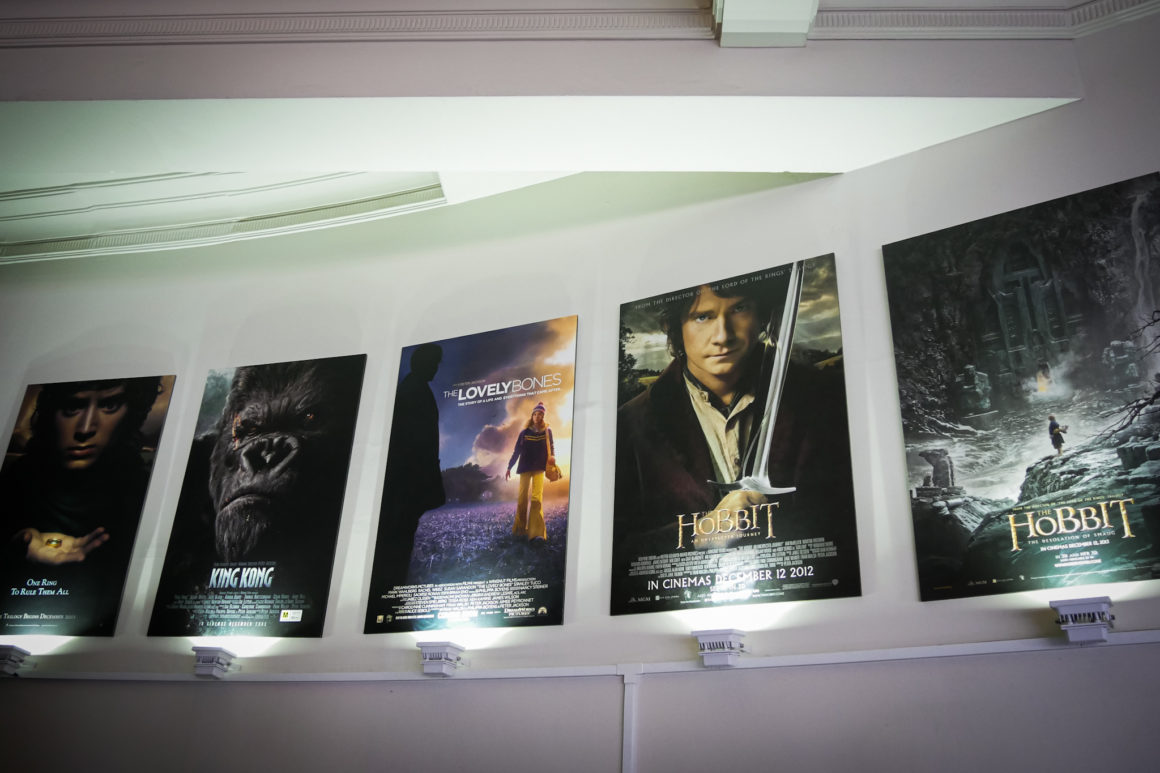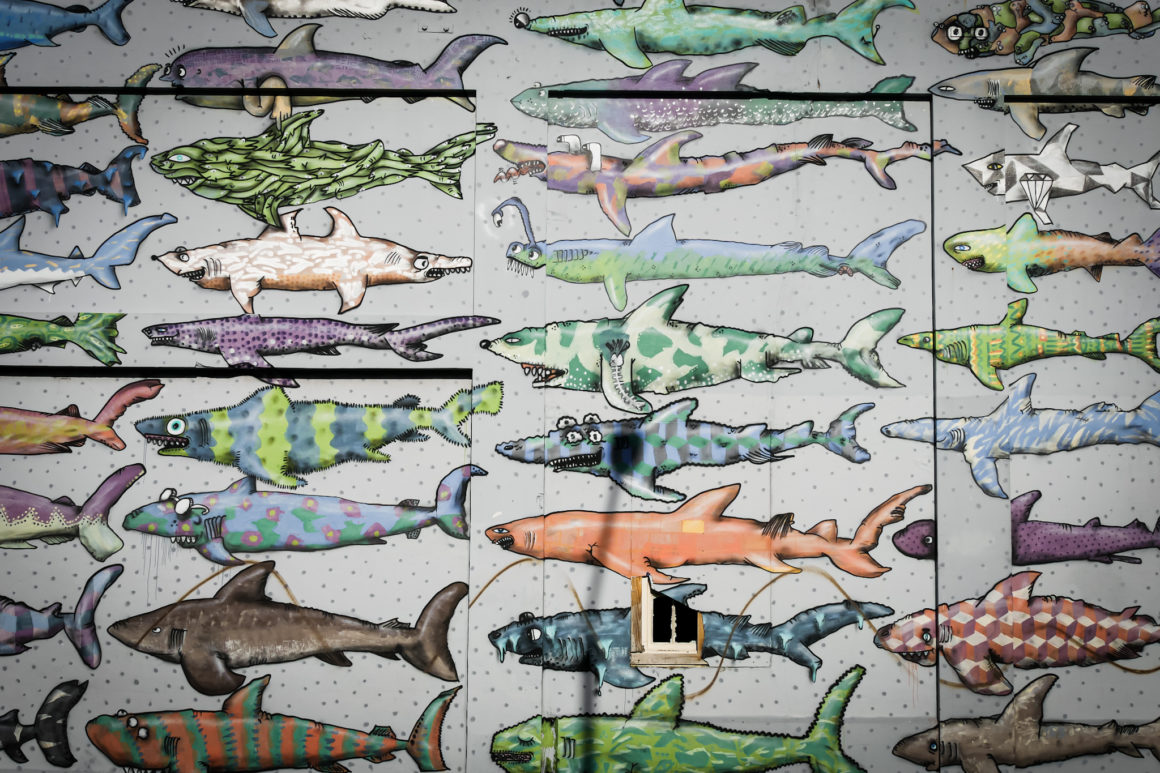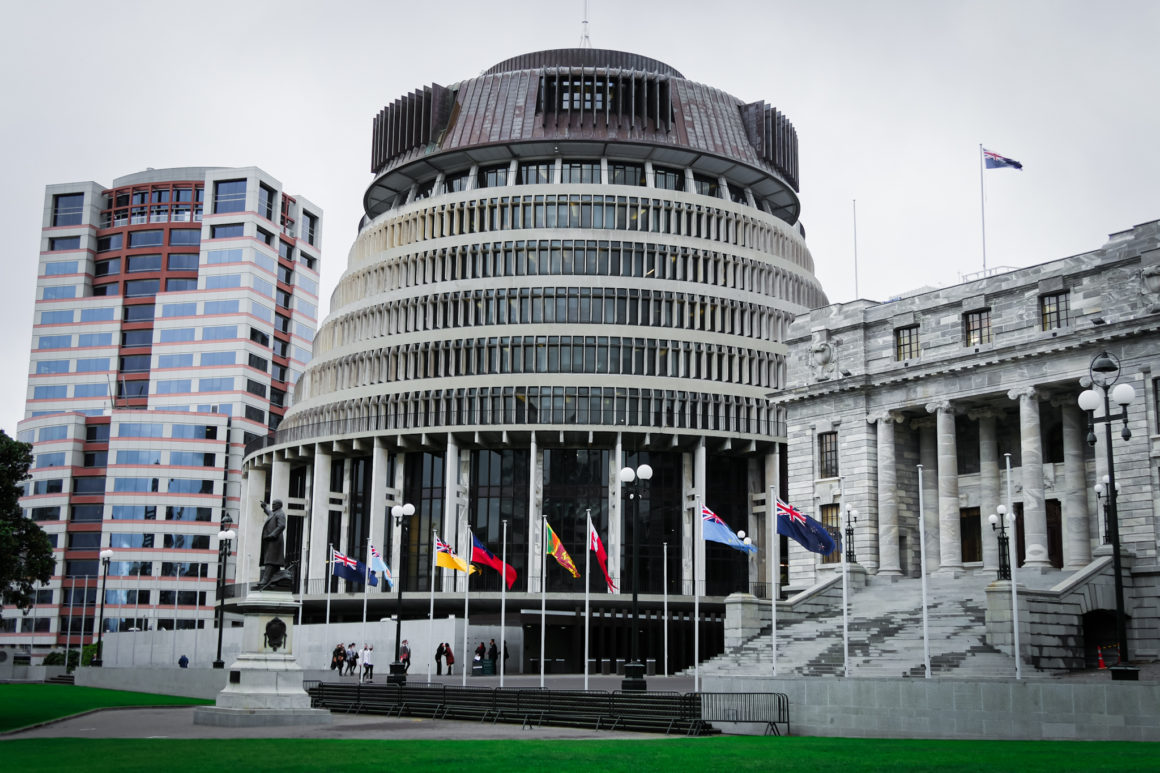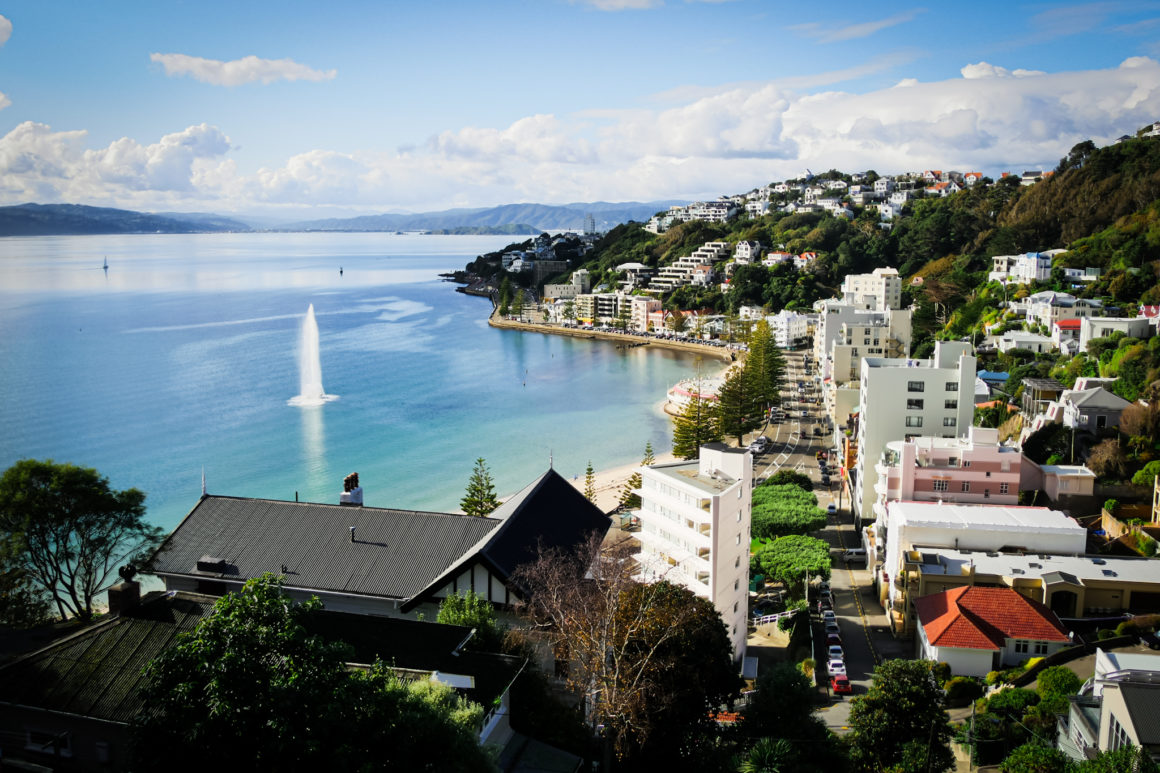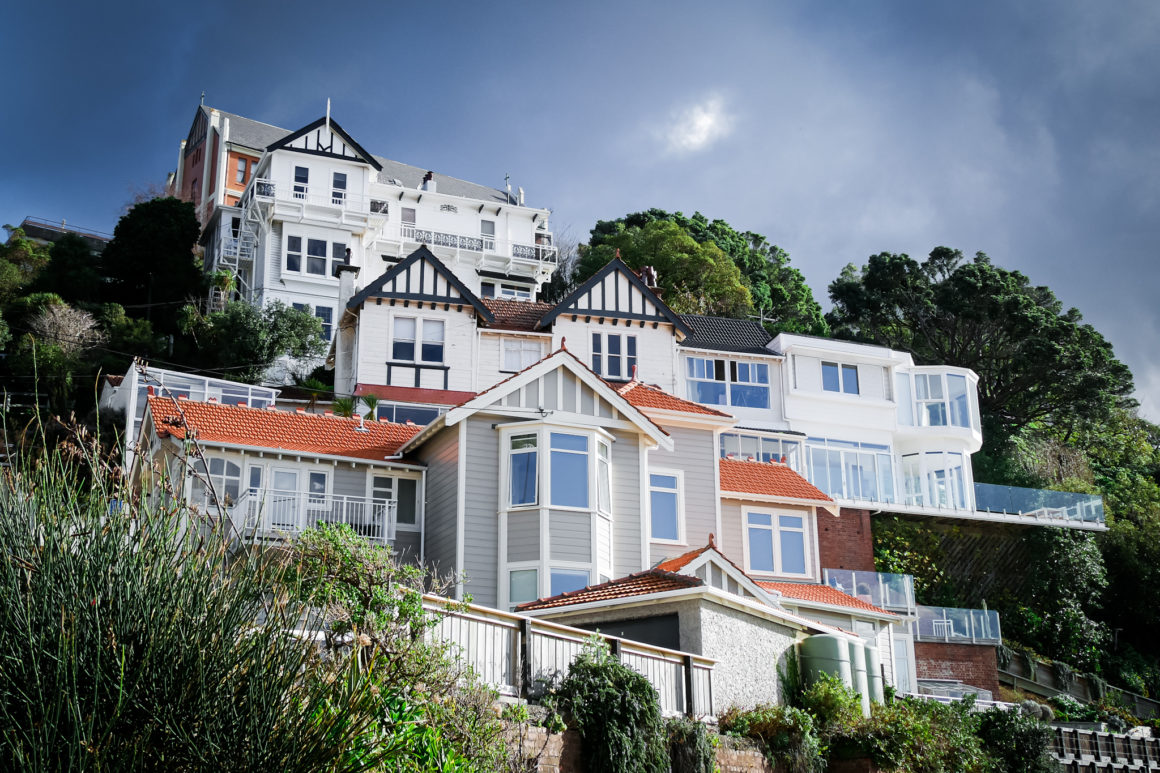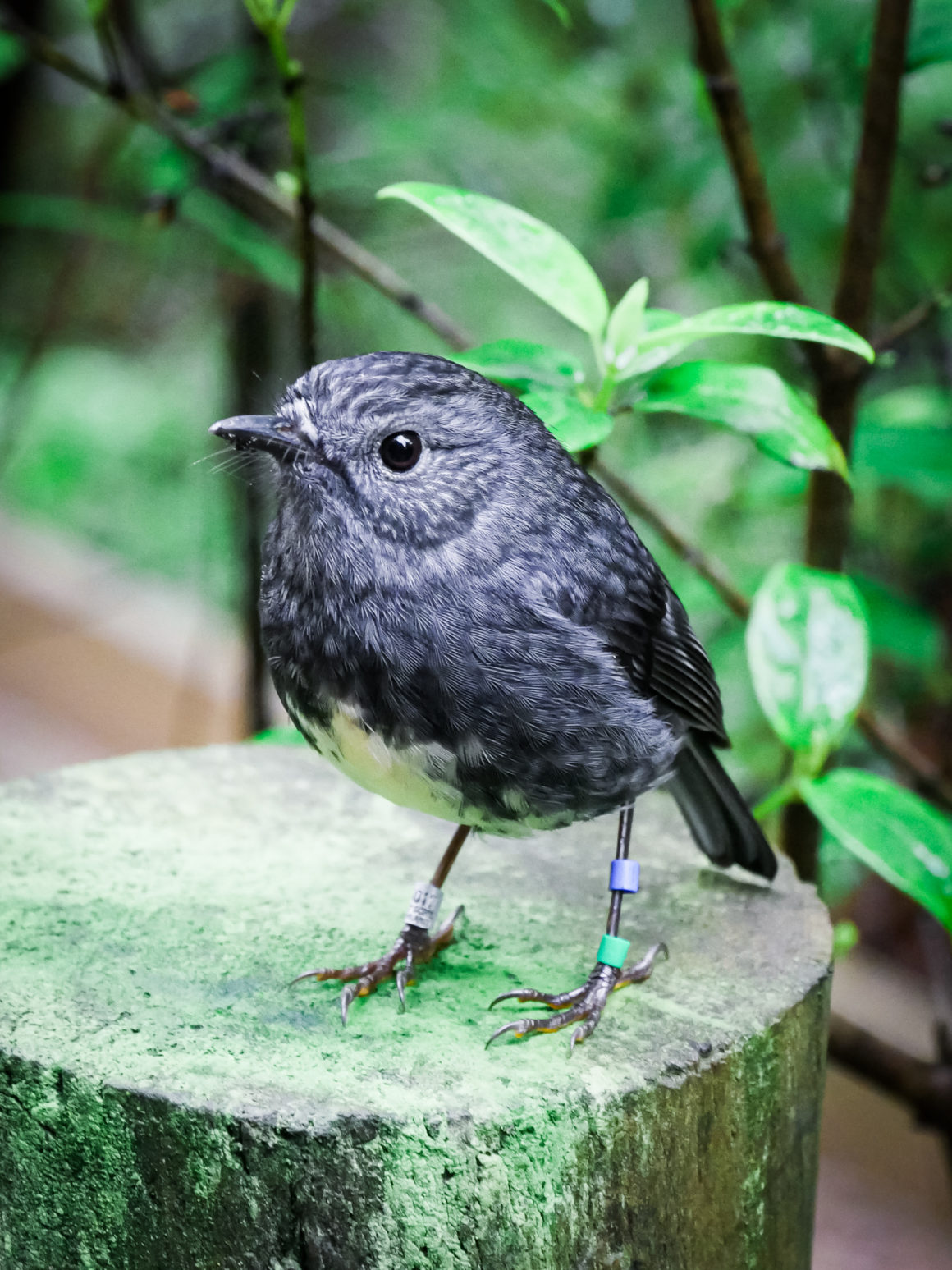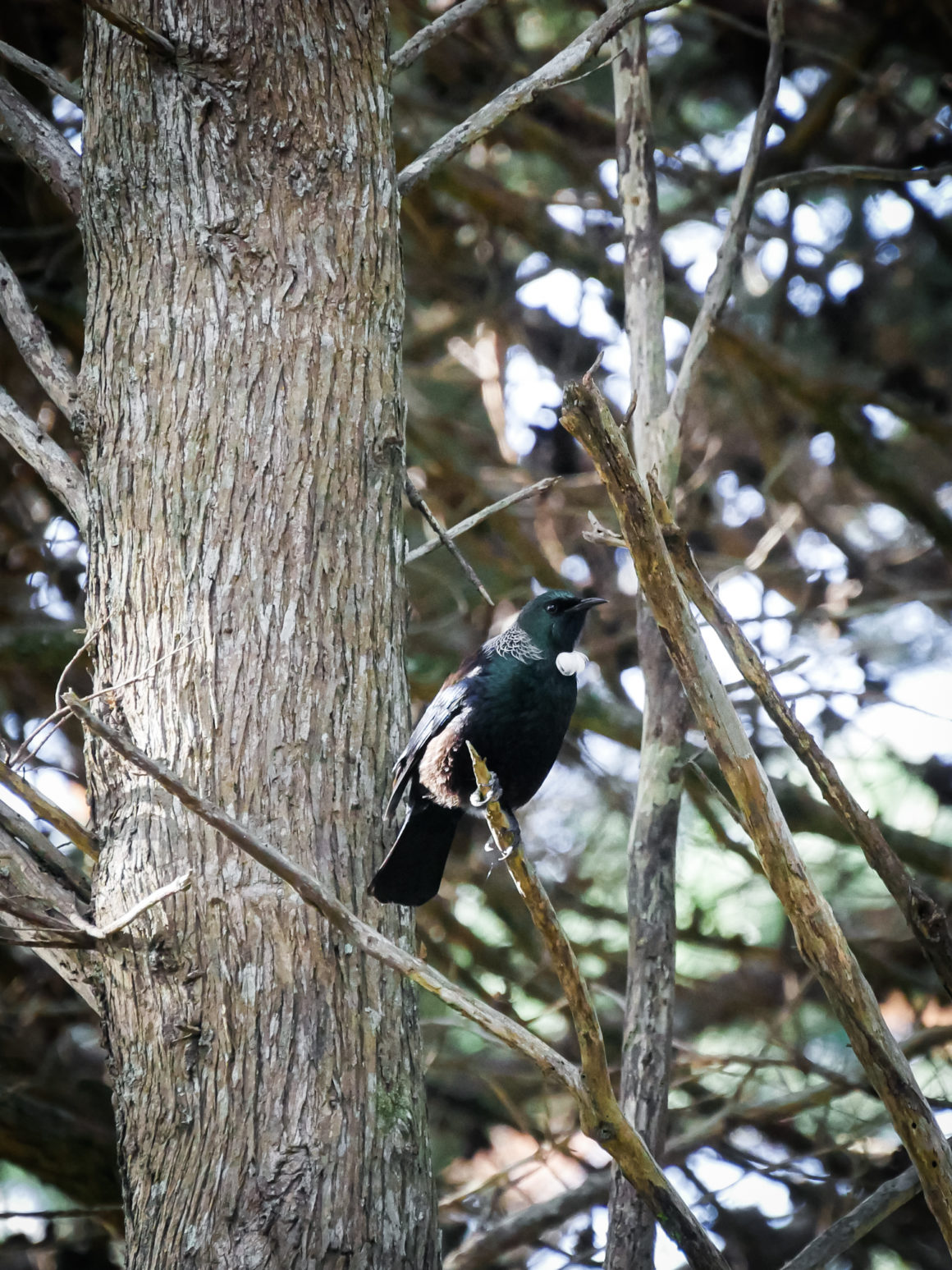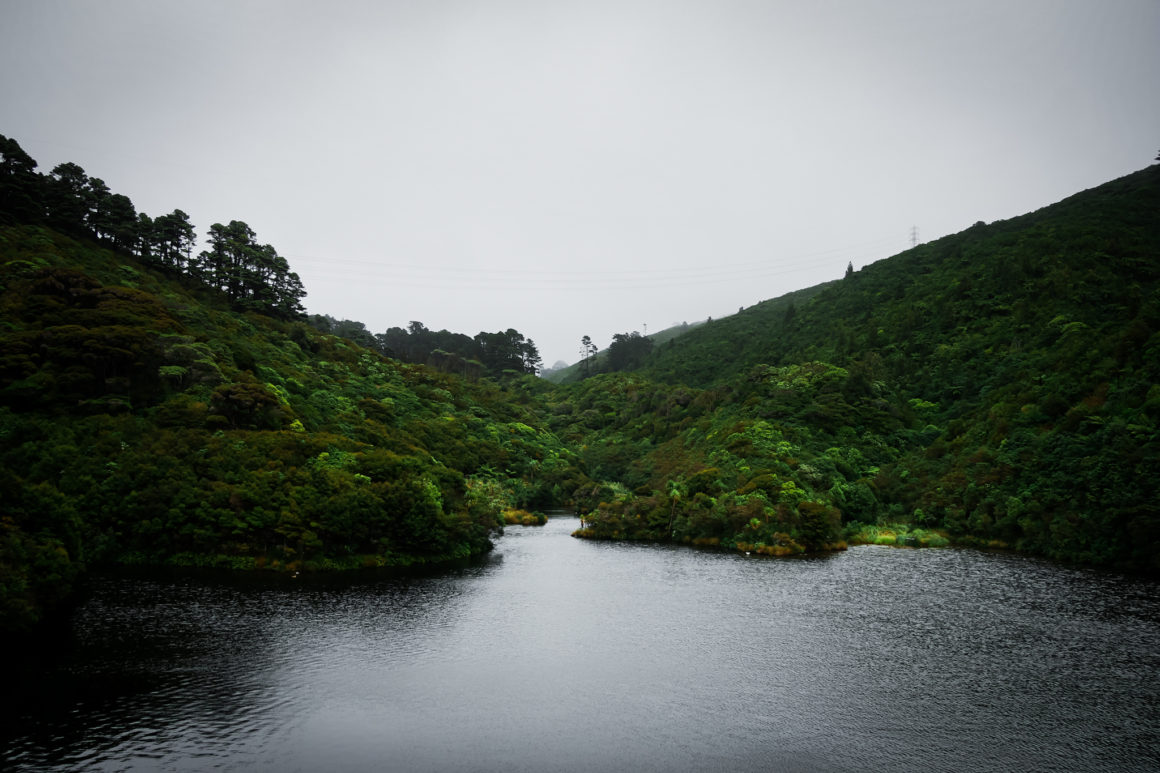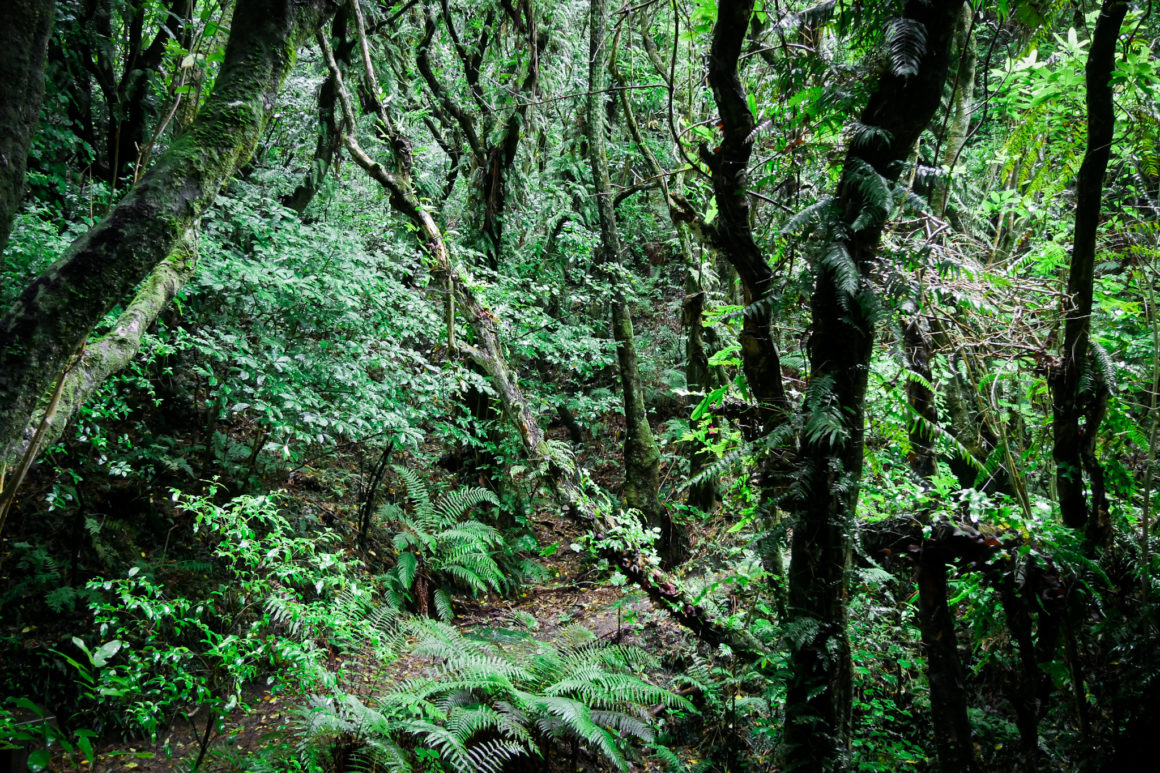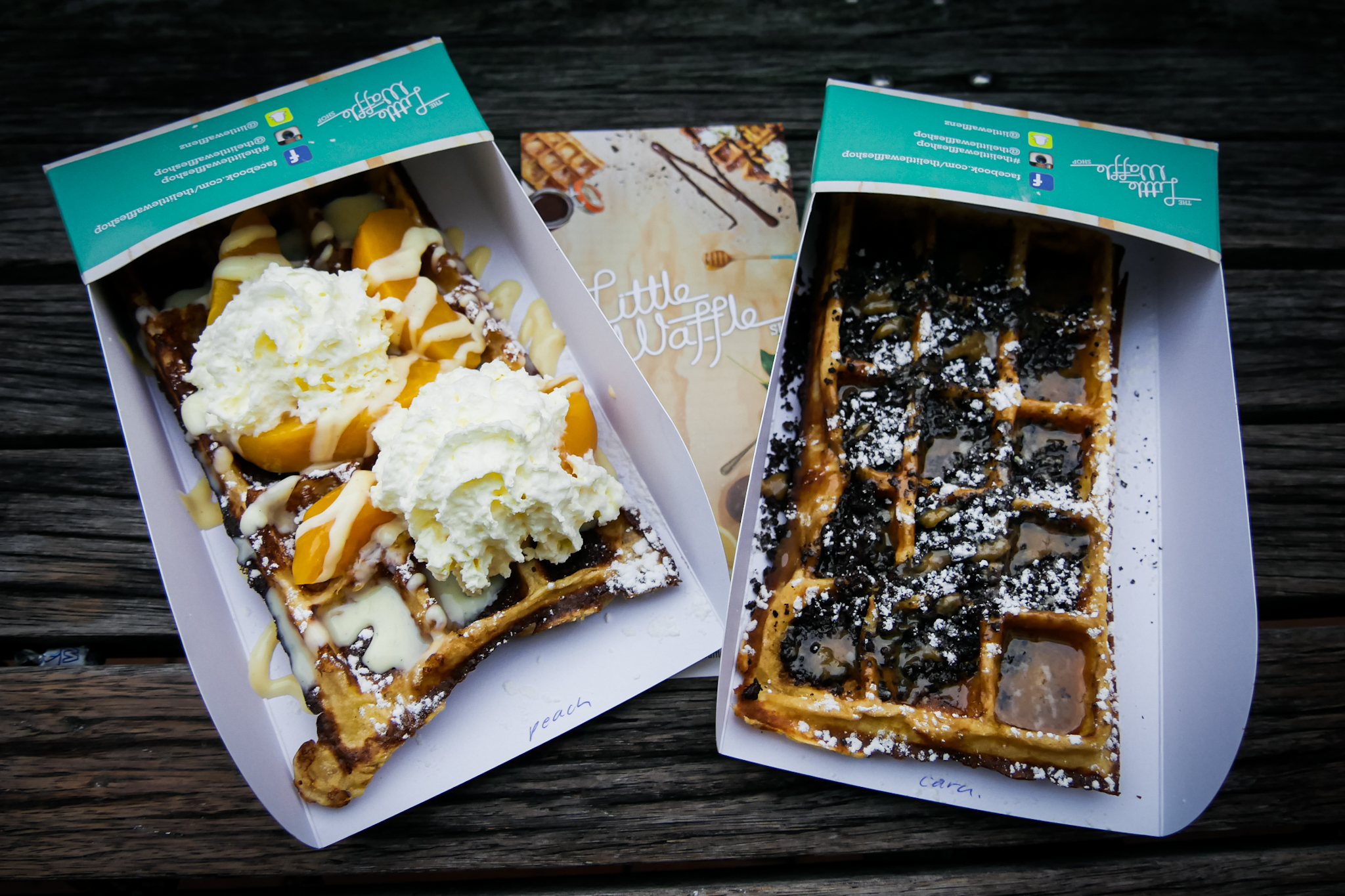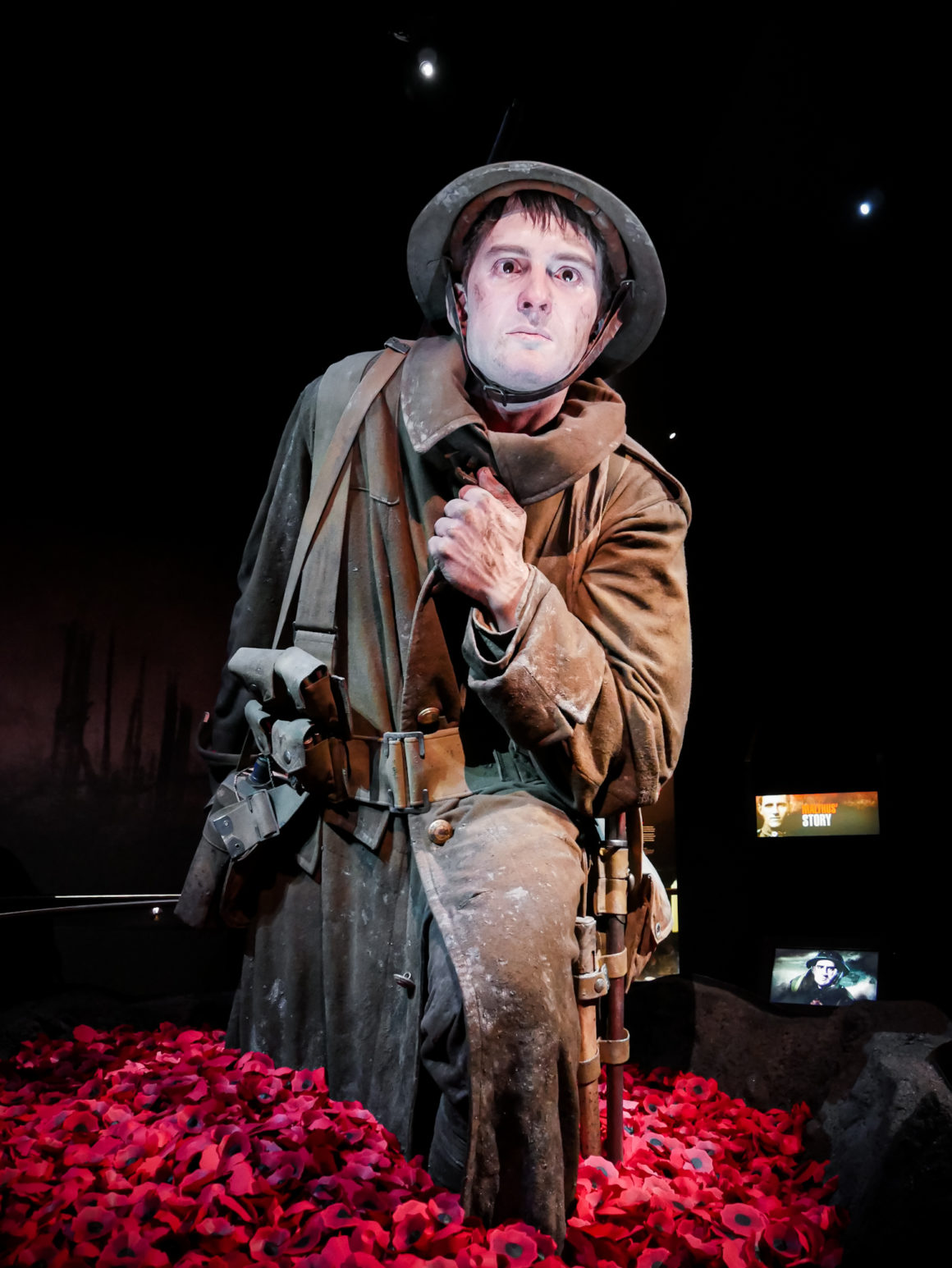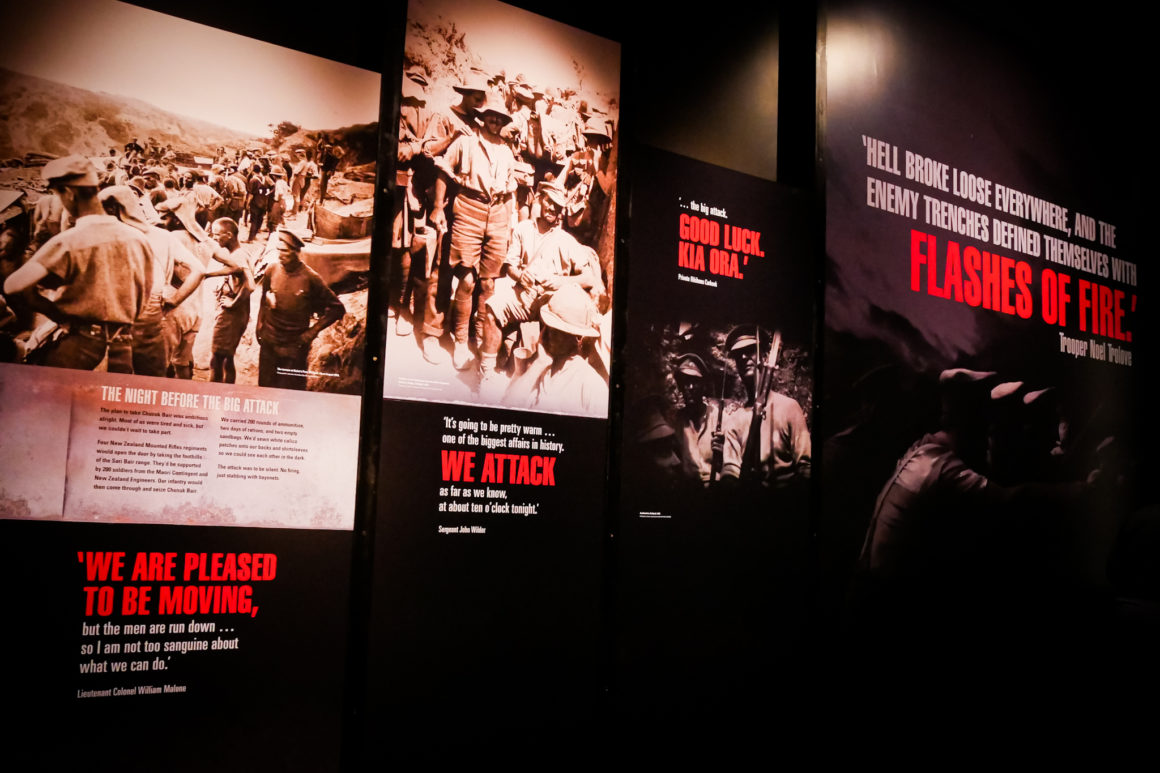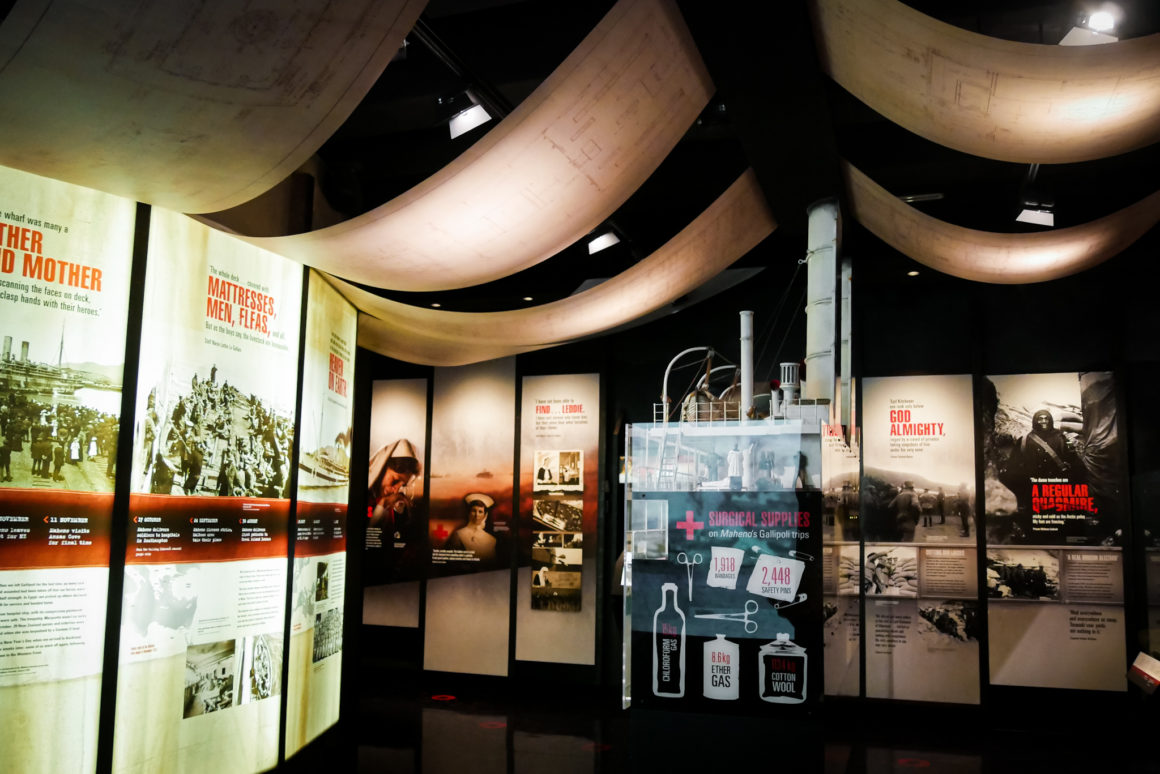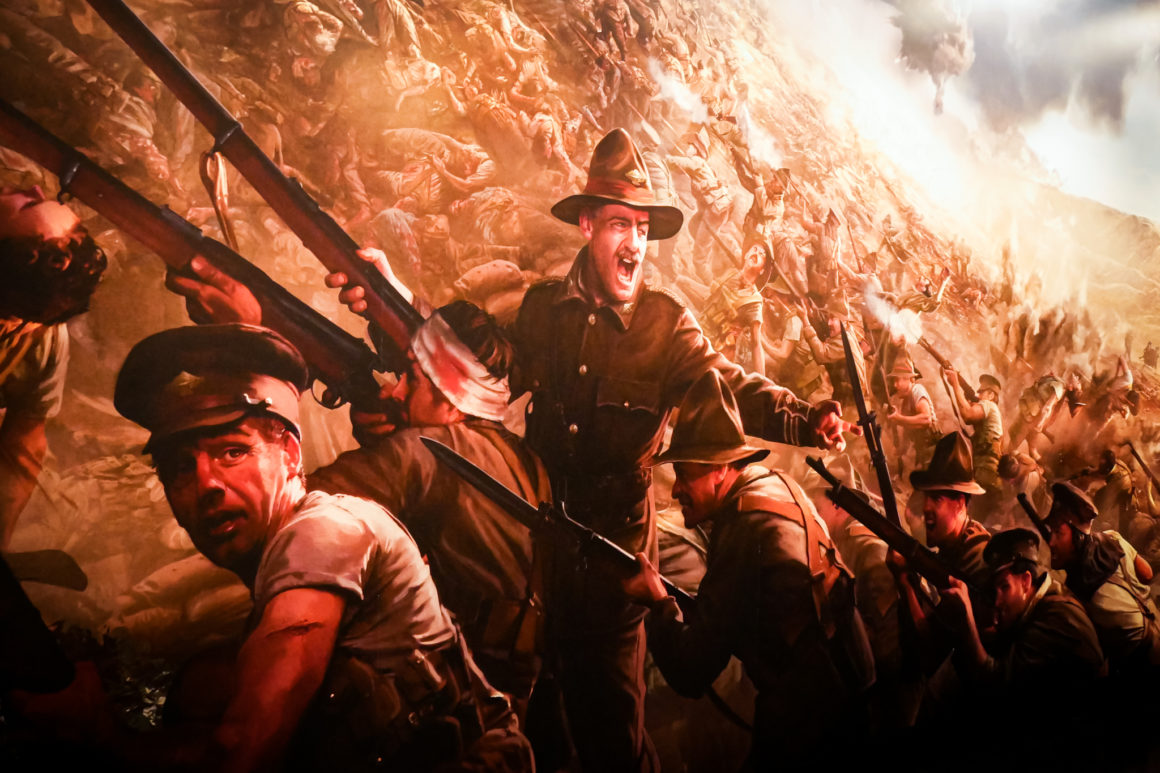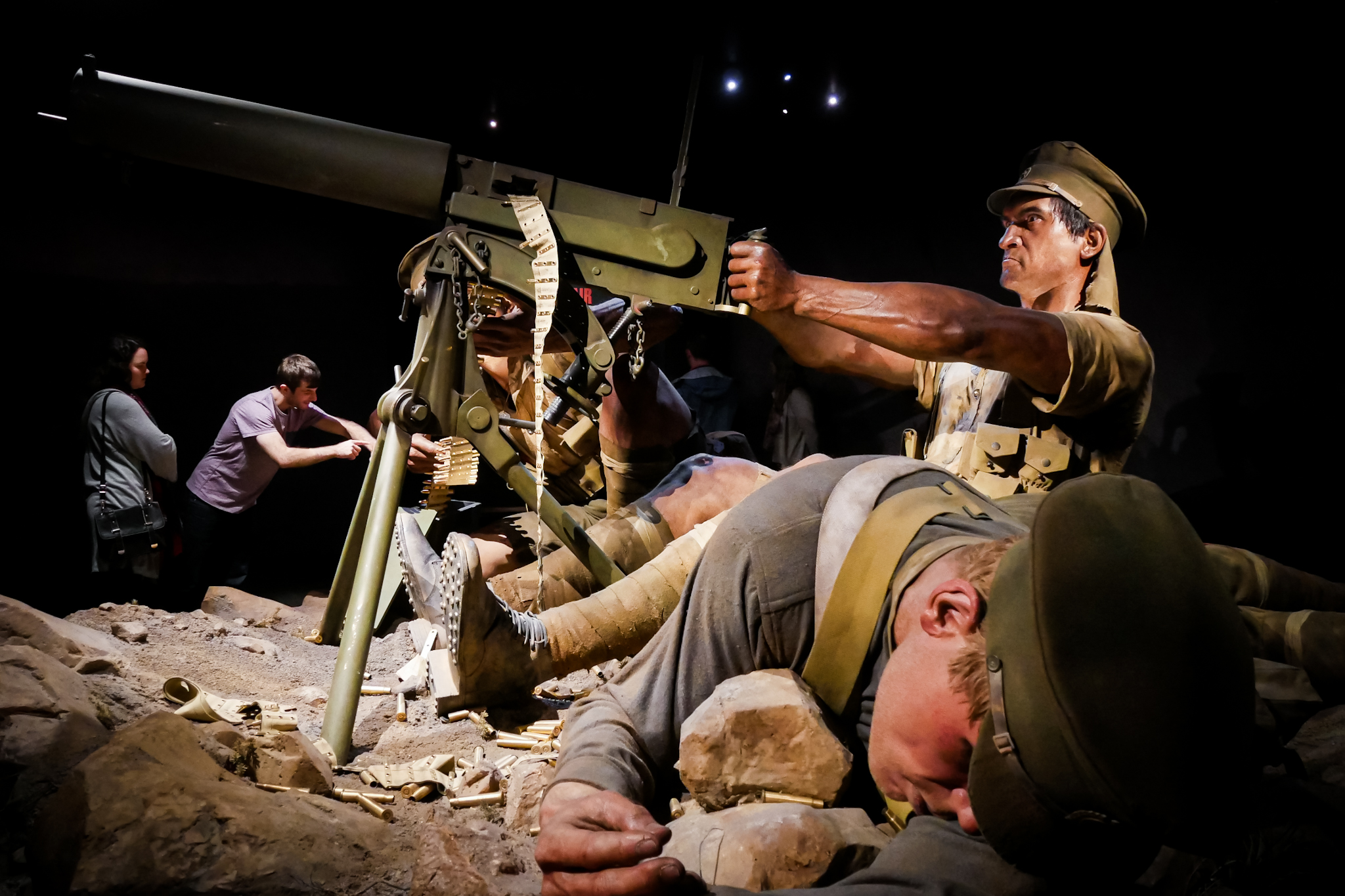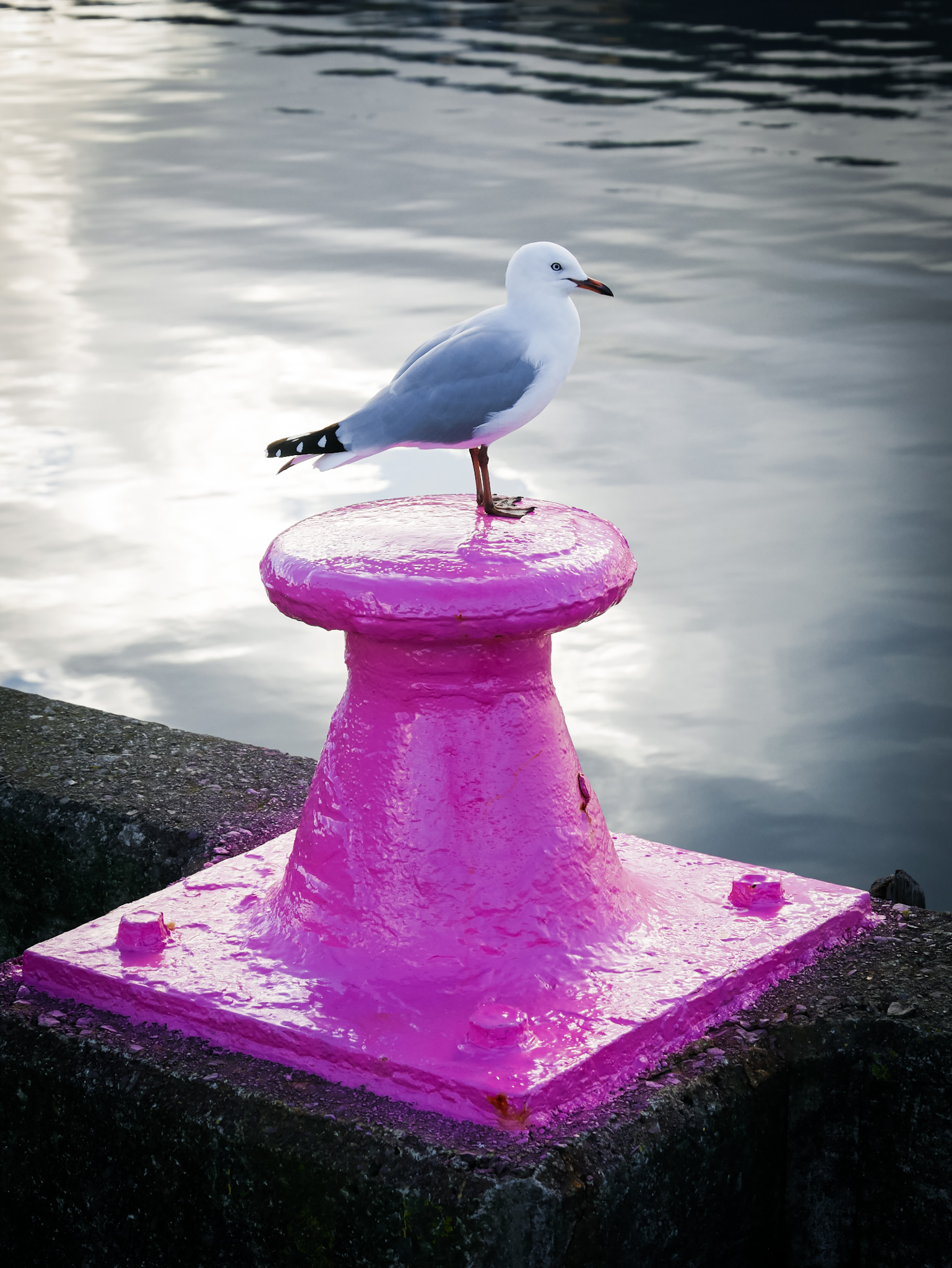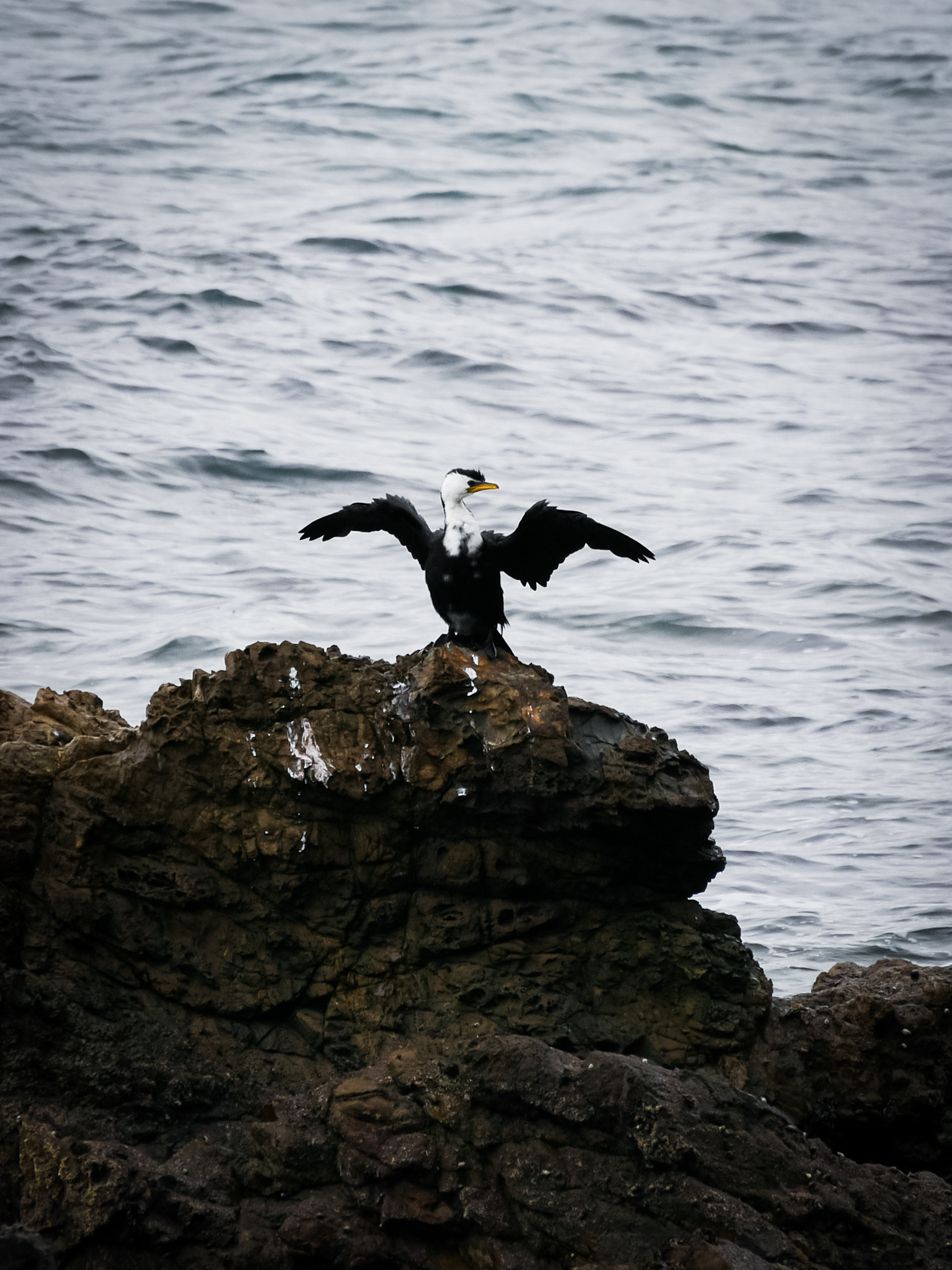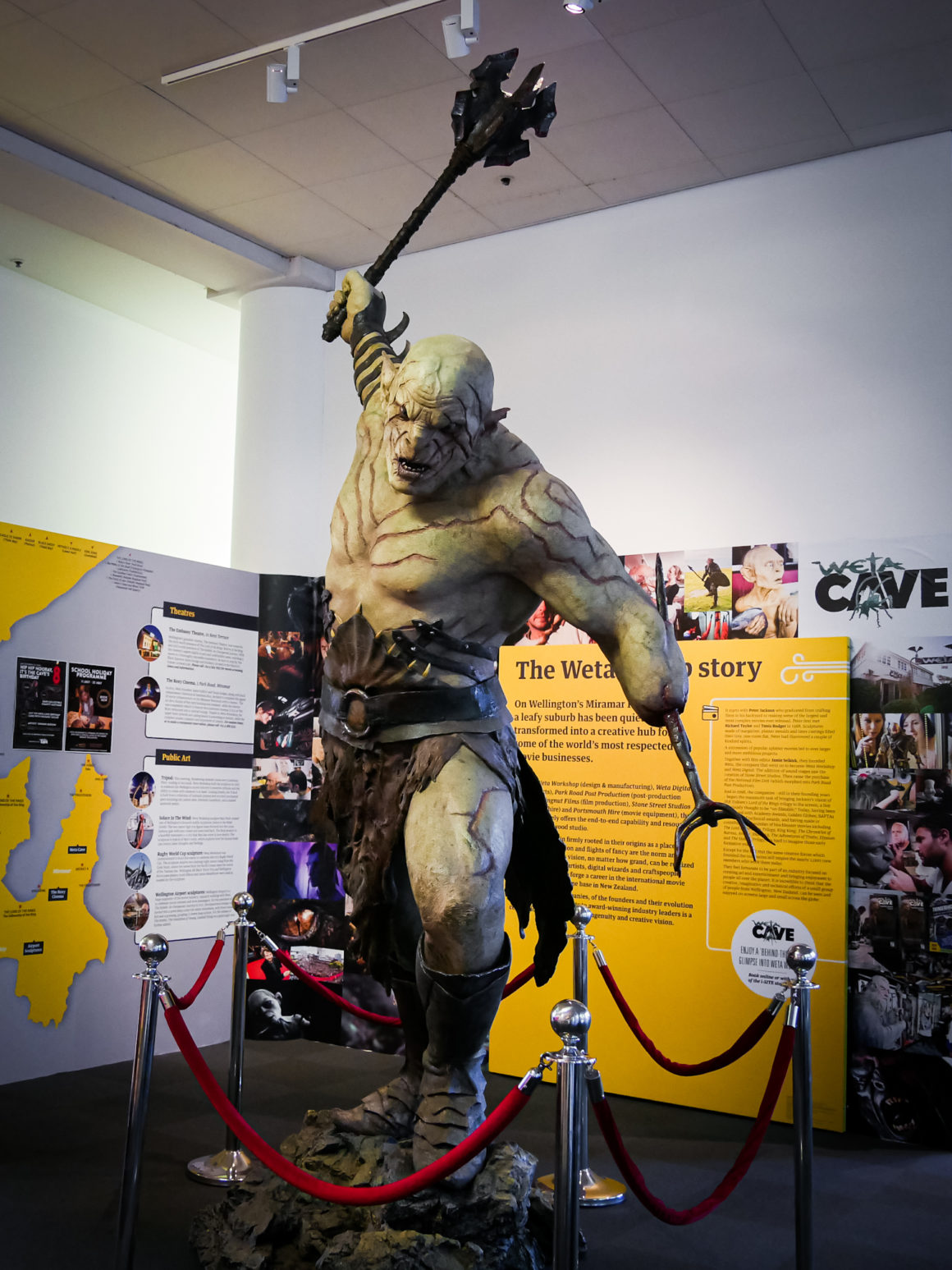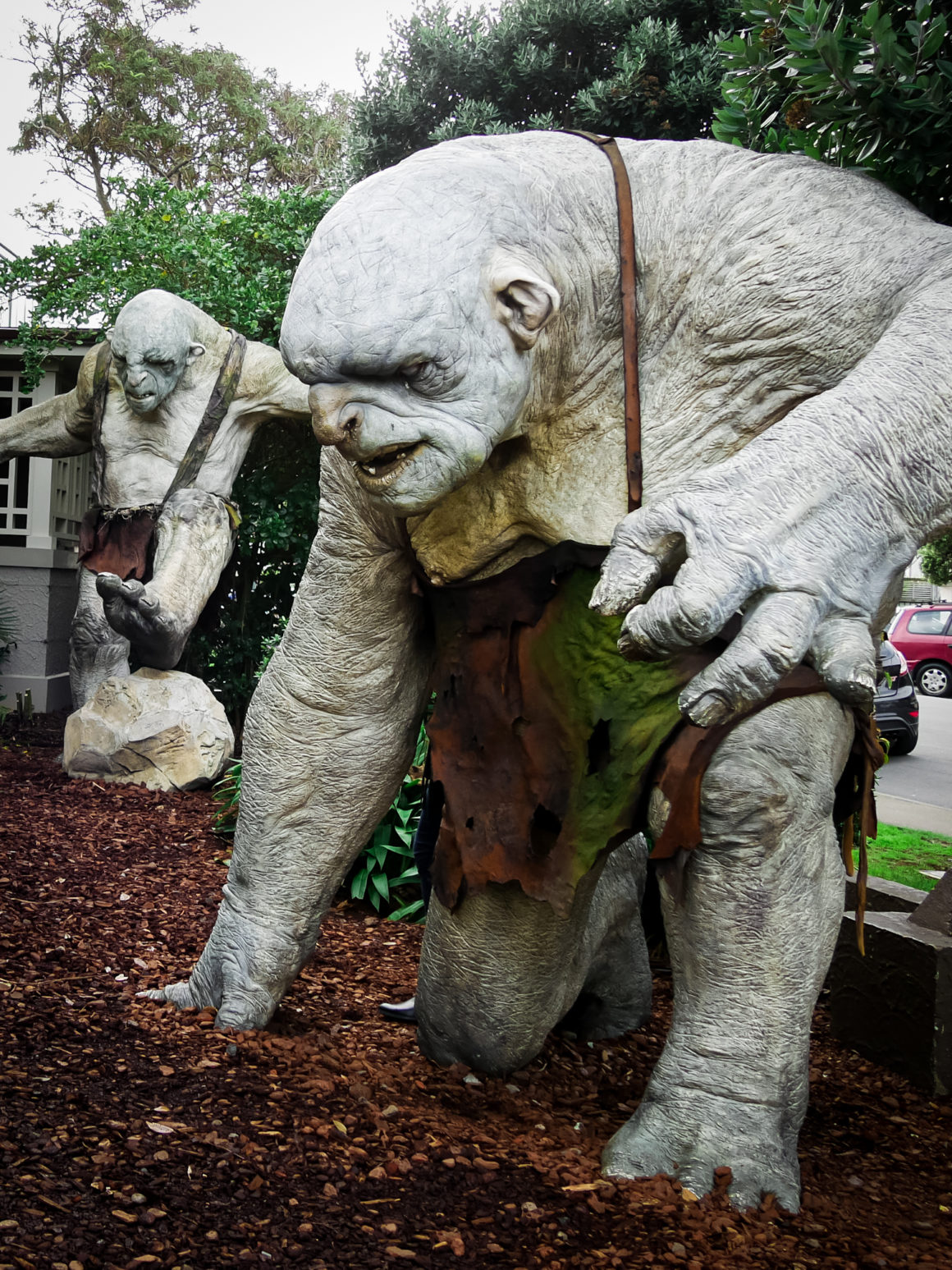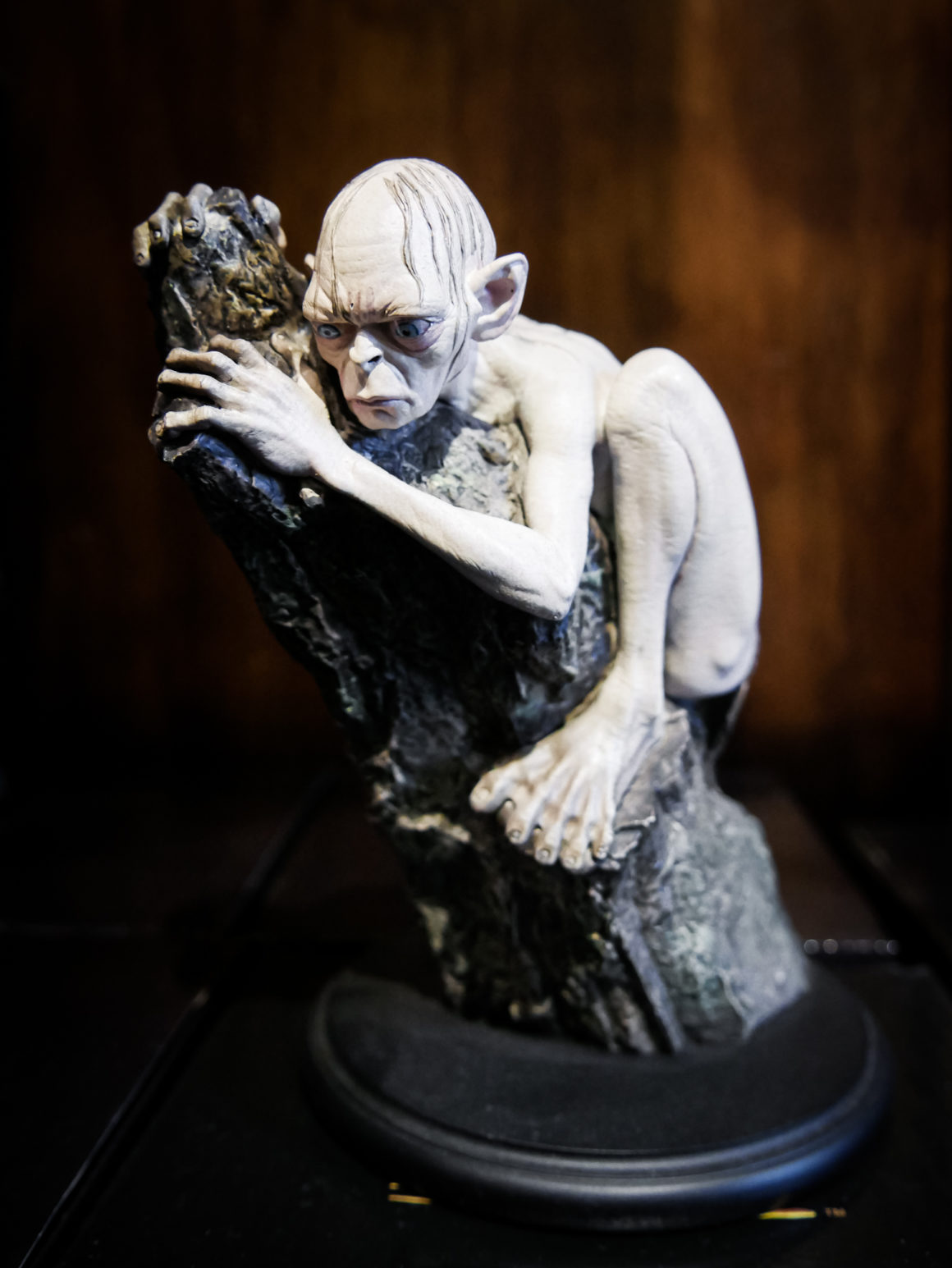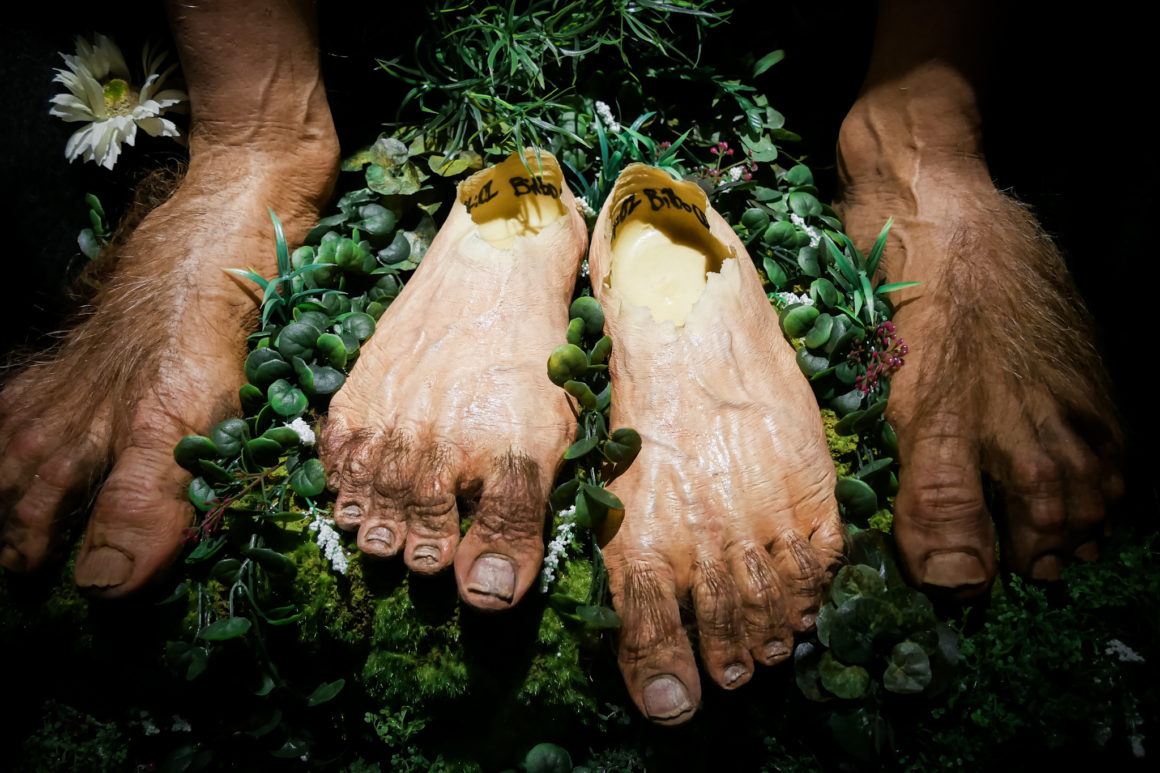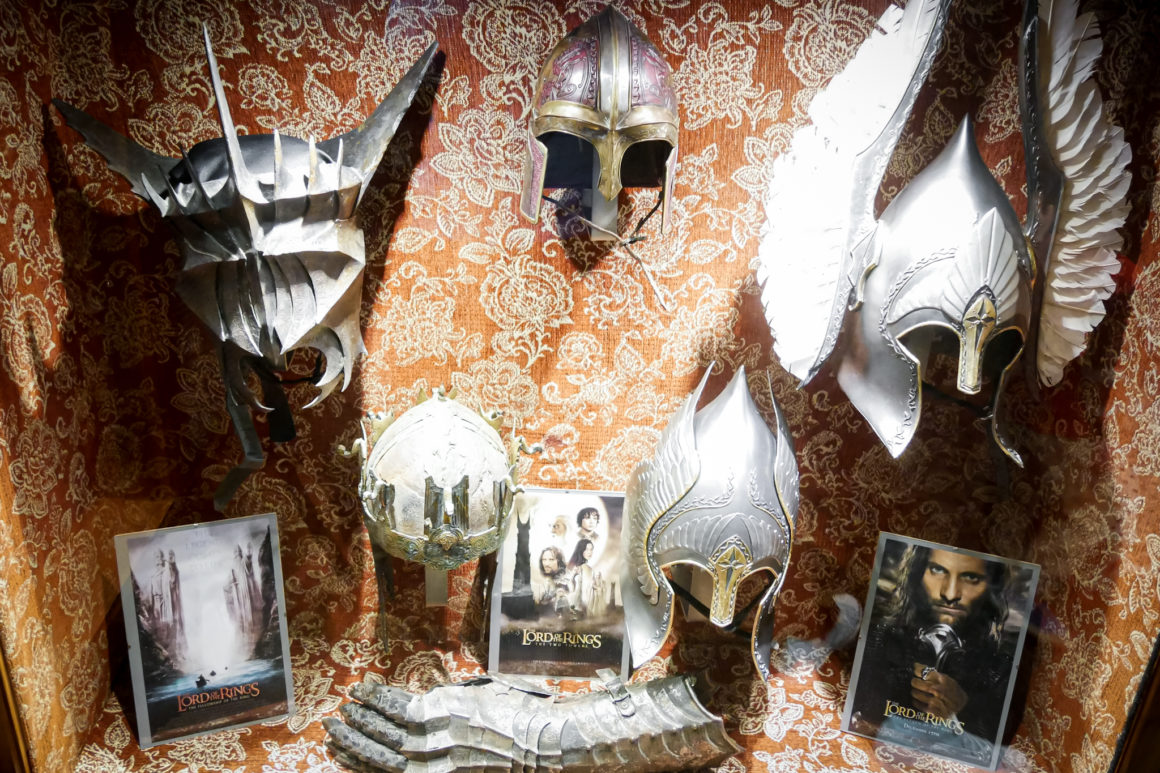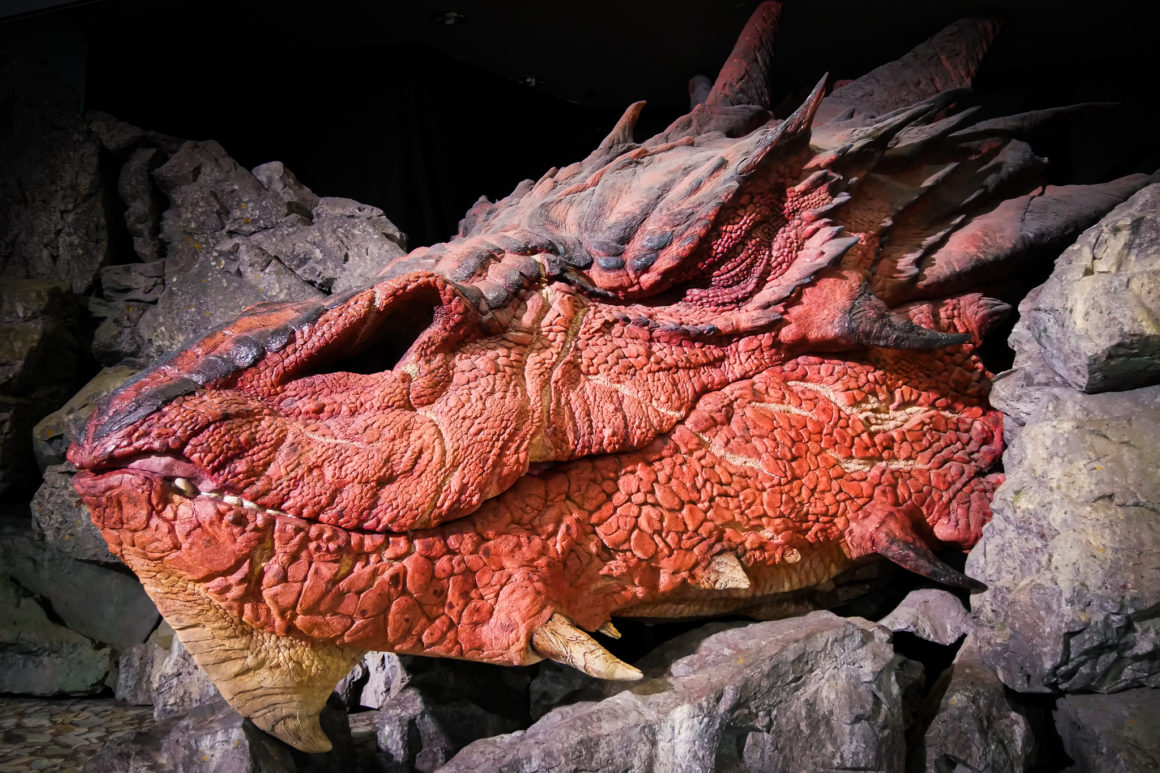DISPATCH
Wellington appears in a pretty bay after a very long journey along the west coast of the North Island. I have been in New Zealand for two weeks now and it is time to go visit the country’s capital. Less populated than Auckland, Wellington lies in the bay of the same name from where the ferries leave for the South Island and is surrounded by the Miramar peninsula and mountain ranges. In the Maori language, Wellington is called Te Whanganui-a-Tara meaning “The great port of Tara”. Wellington is also nicknamed “Windy Welly” because of very frequent gusts of wind sweeping through the strait connecting the bay to the sea and making Wellington one of the windiest cities in the country. Although quite small for a capital (which makes it so charming), Wellington has an important artistic, nocturnal and cultural life. Te Papa, the country’s largest national museum, is located by the sea and Weta, Peter Jackson’s studio, is on the Miramar Peninsula.
I disembark late in the afternoon in gray weather to drop off my things at an hostel that looks like an old impersonal hotel. I hesitate a little since I decided to stay a week in the area. The mantra “Don’t worry, be happy” chases away my negative thoughts and I resolve to introduce myself at the reception. Night falls and I stroll along the seaside which bathes in a half-quiet, half-animated atmosphere. Despite what little I see, Wellington instantly appeals to me.
The week passes quickly and taking advantage of the sun, I walk in the districts of the city. Wellington is situated in an absolutely magnificent environment. Surrounded by the bay, mountains and the peninsula, the capital has a small, charming city center made up of the business district and designer boutiques and a mixture of buildings dating from the 19th century to the present day. There is also the New Zealand parliament, affectionately known as the “Beehive” because of its unique architecture, as well as the Embassy Theater, which hosted all of the first sessions of the Lord of the Rings trilogy and The Hobbit. I went inside to admire the posters of Peter Jackson’s movies. Little moment of emotion!
The Wellington waterfront has an incredible atmosphere. Formerly a seaport, the seaside has been completely renovated to offer residents an incredible space for relaxation. The ascent of Mount Victoria, 196 meters of greenery delimiting the downtown district and that of Oriental Parade offers a superb view of the bay. Oriental Parade is a neighborhood made up of a mix of beautiful Victorian hillside villas with the only beach in central Wellington. There is even a fountain in the sea!
Zealandia, Karori Wildlife Sanctuary, is a huge 225-hectare reserve ten minutes by free shuttle from downtown Wellington. This protected area is a large valley comprising a forest with a very large lake in the center which was once a reservoir for the city. Zealandia’s goal is to restore the valley to its appearance before the arrival of settlers and pests in New Zealand. All of the biodiversity is being restored naturally without human modification. Fully protected by a barrier, there is therefore huge native flora and fauna including Tuatara, Weta, Takahe, Kakariki and many other animals and plants. I went there in torrential rain with Julie, a French woman I met in Rotorua, also passing through Wellington. A very friendly guide showed us one of the Takahe couples living in the park (large blue bird unable to fly with a large red beak) as well as the current study on the behavior of the Black Robin, a small bird very curious. She put several earthworms in a small hollow carved into a stick and noted how many worms the bird went to store in a hiding place before starting to feed itself.
Julie and I quickly swallowed our snack under the only shelter in the park before resuming our walk through the forest. To walk in the middle of the Zealandia ecosystem is to feel like you are in prehistoric times. I almost expected to see a Moa (giant bird that cannot fly and resembling an ostrich, now extinct), or a Tyrannosaurus. We saw a lot of Hihi (little bird with a touch of yellow on the front), Saddleback (superb bird with touches of red always in movement whose specie is almost extinct), Kaka (big very curious parrot), Kereru (superb New Zealand pigeon), Tui (magnificent bird with two small white balls on its throat and producing an extraordinary song), Bellbird (small yellow / green bird with bell song), and Fantail (tiny bird with very interesting behavior).
We also ventured into an old mine to see Cave Weta (a kind of beetle). The fright I had when I lit the mine ceiling a few inches above my head and saw that it was covered with Weta (which in the dark resemble large spiders) . We came out of the park at the end of the afternoon, a bit cold. A visit to Wellington’s best known waffle shop The Little Waffle Shop seemed like the perfect stop. The tiny stall on Courtenay Place offers a dozen waffles with assortments all the more delicious from each other! It will be Caramel Cookie Crumble for Julie and Cheeky Chocolate with Peaches for me. A delight too quickly swallowed!
On Wellington’s seaside boasts the very famous national museum, the Te Papa Tongarewa whose name means in Maori “the place of the treasures of this land”. A gigantic multi-storey building, that has many permanent collections on Maori and New Zealand culture, flora and fauna, art galleries and an outdoor garden. It also has a very beautiful and interesting reproduction of the Treaty of Waitangi (document representing the founding of New Zealand as a nation and the agreement between Maori and Settlers signed in 1840) and houses the largest colossal squid on display (a bit decrepit at the moment in its formalin basin but still very impressive). It takes several days to see all the wonders of the museum. When I went to visit the museum, there were many celebrations in honor of the Maori New Year, the Matariki! Indeed, a group of stars known as Pleiades or Matariki in Maori appear in the New Zealand sky from late May to early June. This is the signal for the Maori New Year and a time of remembrance of the dead and celebration of the new life. Many events took place in the museum including very nice Maori songs and dances.
One of the visits not to be missed in Wellington is the visit of the exhibition, Gallipoli, The Scale of Our War which retraces the Gallipoli campaign during the First World War in Turkey from April 25, 1915 to January 9, 1916. Allies of England, New Zealand and Australia landed on April 25, 1915 on the north bank of the Gallipoli peninsula in present-day Turkey. It was an attempt to seize the strait and open the way to Constantinople in order to make the Ottoman Empire surrender. The operation was a butchery and the two countries suffered numerous losses. For New Zealand, Gallipoli had an unprecedented impact in its history due to the horror and the extremely large number of deaths (in proportion to the size of the country) that the battle engendered. Almost one in five men died.
After the Treaty of Waitangi which consecrated New Zealand as a nation, it was Gallipoli who truly forged the identity of the country. The exhibition produced with the help of Peter Jackson’s studio, Weta Workshop, traces in one of the most successful scenography that I have ever seen the details of the campaign, focusing on the story of eight New Zealand soldiers who found themselves in extraordinary situations. Each of the soldiers is shown in a moment of their life on a monumental scale (2.4x human size) in a wax statue crying out for realism. An entire room is dedicated to each of the statues, each time with a soundtrack describing the hell of the fight. The vision of the scene is spectacular but sometimes a bit difficult to witness. One of the soundtracks mixes the sounds of the battle, the soldier’s voice describing his story, Arabic influences choirs and the sounds of the Maori haka. Very impressive to listen to.
The rest of the exhibit is pure pleasure for the eyes and a marvel of interactivity. For me, having studied interface design, exhibition and graphics, it is Christmas! Paintings, staging, light effects, videos, full of interactive elements, an absolutely wonderful use of typography, a superb soundtrack, fun and interesting content… I would have stayed inside the exhibition for days.
Later in the week, I meet Julie to go around the Miramar Peninsula on foot in order to take a look at the village of Miramar “pretty as a picture” if I believe the brochure. And go on a pilgrimage to the place for any Lord of the Rings fan: the studios of Peter Jackson, Weta and its souvenir shop, the Weta Cave.
The road runs along the peninsula bordering the water and offers us a magnificent landscape but damn windy. Wellington deserves its nickname “Windy Welly”. It takes almost five hours from Te Papa to walk along the Oriental Parade and then the Peninsula to reach the first houses in Miramar on the other side. Hungry, we eat our snack on a pretty beach while watching a group of divers come back from their session. Small cormorants dry their feathers on the rocks. But the weather is worsening and clouds are looming on the horizon.
The three Hobbit trolls are faithfully waiting for us at the entrance to the Weta Cave store. They are impressive in realism. The interior of the store is filled with statues, figurines, books or reproductions of weapons or clothing but nothing very exceptional. I come out a little disappointed. Julie, who visited the studios two weeks ago, advises me against doing it (very expensive for what there is to see). Disappointed I console myself with a few photos. We return to Wellington by bus, both very tired from our day of walking.
After this big week in Wellington, which is currently my favorite city in the country, I leave the North Island on Wednesday June 29 to go to Dunedin on the South Island. Being particularly happy to be in New Zealand, feeling good in this country surrounded by magnificent landscapes and making lots of very nice meetings, I decide to stay for a year. The New Zealand government allowing the transformation of a tourist visa (three months) into a one year visa, I therefore apply for a working holiday permit. While waiting for the answer to obtain the visa or not, I head for the second island of Aotearoa in order to continue exploring the country and start looking for work. Instead of the ferry, I take a plane, the only easy, inexpensive way to get directly to Dunedin. Very beautiful and gigantic statues of Gandalf on an eagle and of Smaug await me at the airport. Classy! In an hour’s flight I will be arrived on the South Island.


